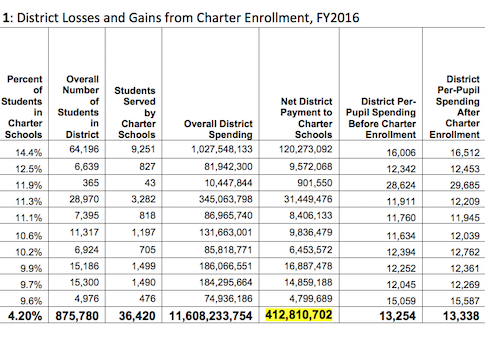What follows is an edited transcript of my remarks at a Century Foundation panel held on Wednesday, The Future of School Integration, about a new book by the same name. The speakers included the book’s editor, Richard Kahlenberg, as well as contributors Stephanie Aberger, Marco Basile, and Sheneka Williams, and fellow commenter Derek Black of Howard University’s Law School.
There are three points I want to make today.
- It’s important that those of us who support socio-economic integration don’t oversell the evidence, and I’m worried that in the book and in today’s comments we’re doing some of that.
- We shouldn’t pit controlled choice against other forms of school choice, especially charter schools.
- We need to think of controlled choice not just as a means of integrating schools; we need to think of diverse schools as a choice in and of themselves.
Let me take each of these points in turn.
On not overselling the evidence
I think it’s a mistake to say, as Marco did, that we’ve known since the Coleman Report that integrated schools do better. We know that there’s a relationship. Rick goes into this in his book, looking at NAEP scores and other evidence, and you can see that in schools with more integration, students perform better—especially poor and minority students. But that does not necessary prove that school integration “works.”
Those of us who support school choice and school vouchers used to like to point out the higher test scores and graduation rates for poor kids in Catholic schools—and argue that therefore Catholic schools are better than public schools. But critics rightfully argued that you can’t prove that it’s the Catholic schools that are making the difference. There’s a selection bias issue. There might be something about the families who are choosing Catholic schools that is relating to the higher achievement, not necessarily the schools themselves. That led to demand for random assignment studies in which we could track kids that not only look the same on the surface (in terms of their background and parental education and such) but had the same motivation. They all entered a lottery, some got in, some didn’t, and we could track their progress. And what we found was that there is an advantage for Catholic schools but it’s smaller than we thought.
We probably have a similar situation when it comes to socioeconomically integrated schools. We haven’t had many random assignment studies. Heather Schwartz’s paper is an important contribution to the research for that reason. But the Chris Swanson study that Marco cited, which found graduation rates to be 10 percentage points higher in socio-economically integrated high schools, is far from gold-standard evidence. As Marco admits in his paper, the evidence is “limited,” because of the selection bias problem.
So we have to be careful not to pretend that we know for sure that if we integrate our schools we will see these huge benefits in terms of increased student achievement and higher graduation rates. We might. But we don’t know that for sure. It’s similar to the way in which we don’t know for sure whether we’d see big gains if we sent more kids into Catholic or charter schools.
Still, I personally find the evidence on integration compelling. Not the evidence discussed here, or in the book, but some of the peer effects research done by Rick Hanushek and Caroline Hoxby that examines the composition of classrooms. What they both find is a strong relationship between the composition of classrooms and student achievement. Mostly this has been looked at in terms of race. As you have high concentrations of African-Americans in a classroom, the African-Americans perform worse. Some scholars have raised questions about these studies, but still, they are pretty compelling.
So if we can get not only integrated schools but also integrated classrooms there’s some evidence that you can have an impact on achievement. But that brings us to another challenge. I strongly suspect that many of these integrated schools we’re talking about—especially magnet schools—don’t necessarily have integrated classrooms. You have schools within schools where there’s a population that’s mostly middle class / upper middle class in the magnet program and the rest of the school is mostly poor. I’m not convinced that we have much evidence that that’s going to do much good in terms of raising achievement.
We have similar issues with gifted programs, honors programs, and AP programs. But if you say to the upper middle class parents: Not only do we want you to choose an integrated school, but we’re NOT going to allow you to choose a gifted program or another opportunity for your kids to get extra challenge—that’s going to be another political difficulty.
In other words, this is all much more complicated than some of today’s conversation has indicated.
On not pitting “controlled choice” against other forms of choice
This is a big mistake politically and strategically. There are a lot of influential people out there who support charter schools and would be with us on controlled choice, but who will be against us if it’s framed as one or the other. We’ve heard from Stephanie that while we could be achieving a lot more integration than we are today, for the foreseeable future there is still going to be a LOT of schools with concentrated poverty. And the question then is: How do we make those schools as high achieving and successful as possible?
My own view is that we look out there and see the KIPPs and other “no excuses” charter schools, as well as some traditional public schools and Catholic schools, that are serving high concentrations of poverty and are doing an amazing job, and we should celebrate those examples and replicate them, rather than saying “it can’t be done except with integration.” Because we’ll never have 100 percent integration.
So let’s have two tracks: Let’s do everything we can to integrate the schools, and for the schools that are going to have high concentrations of poverty, let’s make sure that they are excellent as well.
On diverse schools as a choice in and of themselves
Finally, my last point: The conversation that Rick has led and that’s in the book is how to use controlled choice to get schools that are more integrated. So we say, “OK, we know that middle class/ upper middle class parents like things like language immersion schools, or Montessori schools, or STEM. So we will develop magnet programs, put them in high poverty neighborhoods, and convince affluent parents to cross into other communities for their children’s schooling.”
I don’t have a problem with that, and if you can make it work, and work out the logistics, great.
But we’re missing an opportunity if we don’t think of integrated schools as another brand of choice. In other words, some parents want language immersion, some parents want STEM, some parents want Montessori, some parents want something even more progressive. And some parents really want integrated schools. I am hopeful that there are many of those parents out there who would like to choose that kind of a school for their child.
So, for example, we have in the charter school movement a very important development recently in which there are a number of diverse charter schools that are getting started: Capital City here in DC, the Denver School of Science and Technology, High Tech High. These are excellent schools that have as their mission to be both high achieving and to be diverse. And there’s a place within the charter school movement for these integrated schools. Part of the message to parents is: Choose the school not only because of the academic program that we offer but because you value integration. Parents have signed up. And when they are excellent schools, parents come in droves. Let’s respect parents enough to make diversity a selling point as well.
You can watch the entire discussion from Wednesday’s panel, The Future of School Integration, below.
Video streaming by Ustream
-Michael Petrilli
This post originally appeared on the Fordham Institute’s Flypaper Blog





